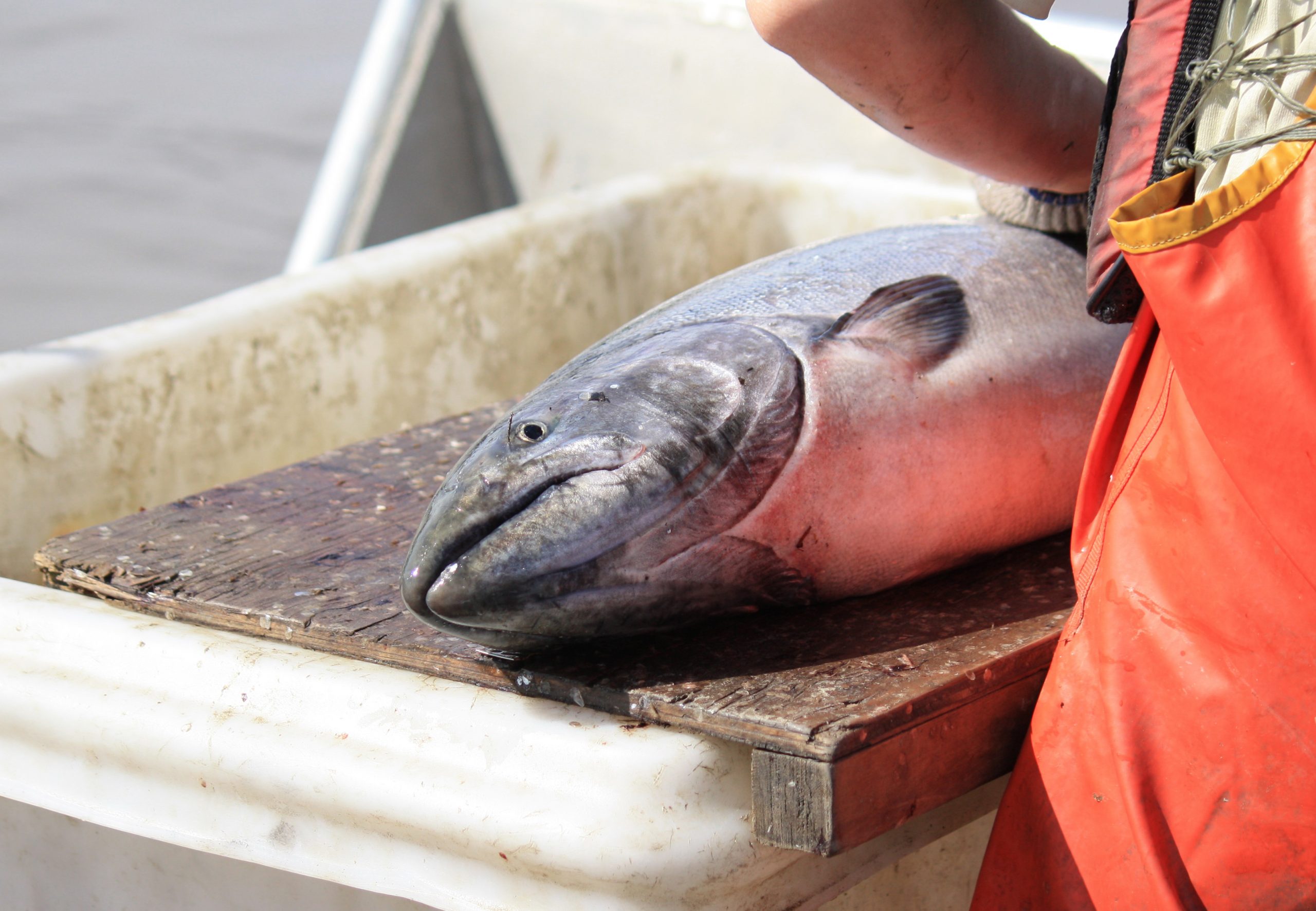Dangerous seas may diminish average size of returning Chinooks
March 25, 2021
Alice Bailey
907-328-8383
Newly released results help explain why Chinook salmon returning to Alaska's rivers have become smaller and younger in recent years.
In a study published in the journal PLOS ONE , researchers at the University of Alaska Fairbanks found that a higher-than-expected death rate of older Chinook salmon while at sea would explain the patterns observed in recent years.
If older salmon are in fact dying at unexpected rates, the phenomenon may reflect sharks and other predators targeting bigger salmon, they said.
Scientists generally have assumed young ocean salmon face the greatest risk because they are vulnerable to nearshore predators.
“We are not saying that is wrong,” said lead author Kaitlyn Manishin, a biologist with the Alaska Department of Fish and Game. “But we want to add that there still can be significant forces acting on the population, especially on age structure, during the third ocean year.”

Manishin, a UAF College of Fisheries and Ocean Sciences alumna, co-authored the study with CFOS faculty members Andy Seitz, Curry Cunningham and Peter Westley.
“The evidence is that, in more recent times, it has gotten riskier for fish that spend more time in the ocean. This work is showing that a real critical bottleneck period seems to be at ocean-age three,” said Westley.
Chinook salmon spend the first year of their life in freshwater, then migrate to the ocean for two to five years.
Like other species of Pacific salmon, Chinook return to freshwater to reproduce and die. Some Yukon River Chinook swim 2,000 miles back to their natal streams. Their massive summer spawning migration has been part of the watershed’s cultural and ecological history for millennia.
Today, fewer Chinook salmon are returning to the rivers to spawn, and those that do are smaller and younger than they used to be. Smaller fish make fewer eggs, which can reduce populations. People have to catch more fish to feed themselves. In commercial fisheries, each fish is worth less.
The study’s co-authors used a life cycle model to test the hypothesis that late-stage marine mortality is affecting age structure — the proportion of a population at various ages. They used data from the Salcha River, a tributary east of Fairbanks and the largest producer of Chinook in the Yukon River watershed.
Life cycle models are based on previous research. When simulated results do not reflect nature, scientists add new information.
In this case, increasing the model’s natural mortality among Chinook at ocean-age three produced results that most closely reflected real-life returns to the spawning ground.
If older Chinook are dying in the ocean, Seitz may have an explanation.
“Visual predators look for the oddball, and when Chinook reach age three they are bigger than the other species, so predators can focus on them,” he said.
Seitz’s research with tagged Chinook has shown that many of them end up in the bellies of salmon sharks, which share the Bering Sea with Chinook salmon. Other studies have documented killer whales eating larger Chinook salmon in the North Pacific Ocean.
“For 20 years, we have been trying to figure out what is going on with Chinook salmon,” Seitz said. “We have looked at bycatch. We have looked at fishing. We have looked at environmental drivers. But people had not been considering mortality of older individuals with particular reference to predation.”


